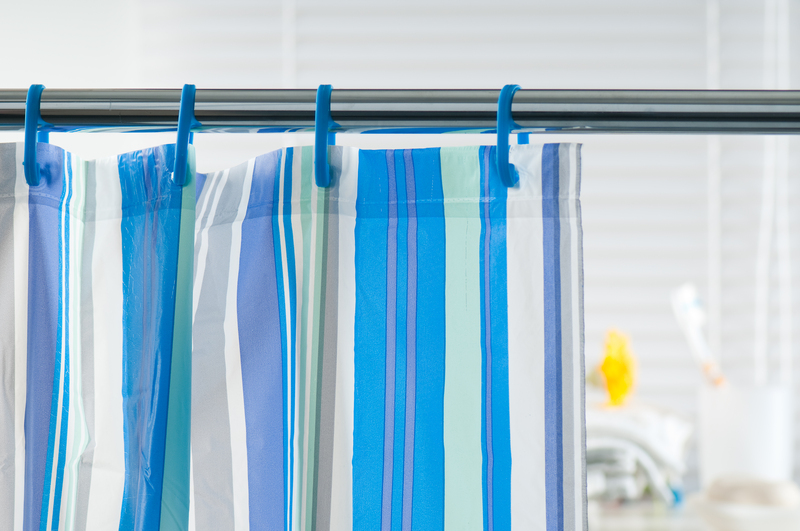Simple Steps to Dispose of PPE Waste Responsibly at Home
PPE waste--such as used masks, gloves, and other personal protective equipment--has become a common household concern, especially following the COVID-19 pandemic. Proper disposal of PPE waste at home not only safeguards your family's health but also protects the environment by preventing contamination and reducing landfill pollution. In this comprehensive guide, we'll walk you through simple steps to dispose of PPE waste responsibly at home, ensuring you do your part in creating a safer, cleaner world.

Why Responsible Disposal of PPE Waste Matters
Personal protective equipment like face masks, gloves, and face shields are essential for minimizing virus transmission, but improper disposal can have significant environmental and health repercussions. PPE waste may carry infectious agents, posing a risk to sanitation workers, wildlife, and the public if not handled correctly.
- Environmental Impact: PPE items are often made from non-biodegradable plastics. When thrown carelessly, they can clog waterways, harm animals, and contribute to the global plastic problem.
- Public Health Risk: Used PPE can carry pathogens, potentially spreading infections if handled by others or left exposed.
- Regulatory Requirements: Many regions now mandate specific disposal protocols for used masks and gloves to mitigate both health and environmental risks.
Understanding Different Types of PPE Waste at Home
Before discussing the best practices for PPE waste disposal, it is important to recognize what constitutes PPE in a household context:
- Face masks: Disposable surgical masks, N95/FFP2 respirators, cloth masks.
- Gloves: Nitrile, latex, or vinyl single-use gloves.
- Face shields and goggles.
- Protective gowns or coveralls (if used during caregiving).
- Antibacterial wipes and tissues used for hygiene and cleaning.
For the purposes of this guide, we focus on disposable PPE--the primary source of household PPE waste.
Step-by-Step Guide to Responsible PPE Waste Disposal at Home
Step 1: Segregate PPE Waste from Regular Trash
The most crucial aspect of responsible PPE waste disposal is proper segregation. Keep used PPE separate from your regular garbage or recyclable materials.
- Use a dedicated, lined bin: Place a small, lined pedal-operated bin in an accessible area for PPE disposal at home. Avoid touching the bin lid with your hands.
- Do not mix PPE waste with recyclables
- Teach all household members about the importance of segregating potentially contaminated items.
Step 2: Ensure Safe Handling and Containment
When removing PPE items like masks or gloves, do so carefully to avoid self-contamination:
- Wash your hands thoroughly before and after touching used PPE.
- Take off gloves first by pulling them off inside out and disposing of them directly into the designated PPE bin.
- Discard masks by only touching the straps or ear loops. Fold the outer surface inward and dispose of it safely.
- For cloth masks, wash them properly instead of discarding after single use.
Step 3: Double-Bag Sensitive PPE Waste
To minimize risks, especially if there's a chance someone in your home may be ill, always double-bag used PPE waste at home:
- Place the first bag with used PPE inside another clean plastic bag.
- Tie both bags securely to prevent any accidental spillage or leakage.
Step 4: Label and Store PPE Waste Separately
It is a good habit to label your PPE waste as "hazardous" or "PPE waste" if possible, especially if you are in contact with waste handlers or cleaners.
- Keep double-bagged and labeled PPE waste separate from regular waste until the collection day.
- Store it in a designated, secure outdoor area if possible, to avoid accidental human or animal contact.
Step 5: Dispose with Regular Household Waste (If No Hazardous Waste Service Available)
In many residential areas, there is no separate hazardous or biohazard waste collection for households. In this situation, follow your municipal guidelines:
- Place double-bagged PPE waste in your general waste (not recycling or compost).
- Do not put PPE items in recycling bins as they can cause harm at recycling centers and contaminate recyclables.
- If you live with vulnerable individuals or someone infected, let your waste sit for 72 hours before being placed out for collection, as per health authority guidelines.
Step 6: Wash Your Hands Again
After handling and discarding any PPE waste, immediately wash your hands with soap and water for at least 20 seconds or use an alcohol-based hand sanitizer. This is the best protection against accidental contamination.
Additional Tips for Sustainable PPE Disposal at Home
- Use reusable PPE whenever possible: Opt for washable cloth masks and disinfectable gloves to reduce single-use waste.
- Educate family members about the risks and protocols of PPE waste handling.
- Stay informed about your community's waste management guidelines related to PPE disposal at home.
- Minimize unnecessary use of non-biodegradable PPE products.
- Never litter PPE in public places, as it creates a health and environmental hazard.
Eco-Friendly Disposal Options
The environmental impact of PPE can be mitigated by switching to sustainable alternatives and being proactive about disposal:
- Switch to biodegradable masks and gloves if you can access them. These products break down naturally and reduce plastic pollution.
- Support community initiatives collecting PPE waste for specialized treatment or recycling.
- Look for local drop-off points managed by medical waste handlers, if available, for high-risk households.
Frequently Asked Questions on Home PPE Waste Disposal
1. Can I Recycle PPE Waste at Home?
No. Disposable masks, gloves, and most wipes are made of mixed materials, making them unrecyclable in standard recycling streams. Placing them in the recycling bin contaminates other materials and poses risks to recycling workers.
2. What if I have a large volume of PPE waste at home?
In cases of home care or quarantine, double-bag the waste and store separately. If your local waste services offer a hazardous waste pickup, make use of it. Otherwise, adhere strictly to double-bagging protocol and inform waste handlers if possible.
3. Should I disinfect PPE waste before disposing?
Generally, direct disinfection isn't necessary if you follow double-bagging procedures and proper containment. However, it is wise to spray the outer bag lightly with a household disinfectant before final disposal, especially if someone is sick.
4. Is it safe to burn PPE waste at home?
No. Burning PPE can release harmful toxicants, pollute air, and is generally prohibited in residential settings. Always use proper waste channels.
5. How can I minimize PPE waste at home?
- Opt for reusable masks and gloves as appropriate.
- Plan outings to reduce exposure and the need for multiple PPE items daily.
- Purchase quality, durable PPE for longer use.
What to Do if There's Suspected Infection at Home
If someone in your household is ill or self-isolating due to an infectious disease, take extra PPE disposal precautions:
- Double-bag all PPE used by the ill person and tissues or wipes they used.
- Keep this waste separate from other household trash for at least 72 hours before collection.
- If a professional healthcare disposal service is available, use it.
The Impact of Irresponsible PPE Waste Disposal
Improper PPE waste disposal at home endangers sanitation staff, wildlife, and the environment. Discarded gloves and masks can block drains, pollute landscapes, and entangle animals. Moreover, exposed PPE can serve as a vector for disease transmission in the community.

Summary: The Responsible Way to Dispose of PPE Waste at Home
- Always segregate PPE waste from regular and recyclable waste.
- Double-bag used PPE and tie both bags securely.
- Do not recycle PPE waste--place it in the general waste bin.
- Label, store separately, and educate your household.
- Wash hands thoroughly after handling any PPE waste.
By following these simple steps to dispose of PPE waste responsibly at home, you help protect your family, community, and the environment. Make responsible PPE disposal at home part of your daily hygiene routine, and encourage others to do the same for a safer, cleaner world.
Help Spread the Word on Responsible PPE Waste Disposal
Share this guide with friends, family, and neighbors to promote safe PPE waste practices at home. Responsible disposal starts with you!
Further Reading
For more tips on environmental safety and household hygiene, keep following our blog!